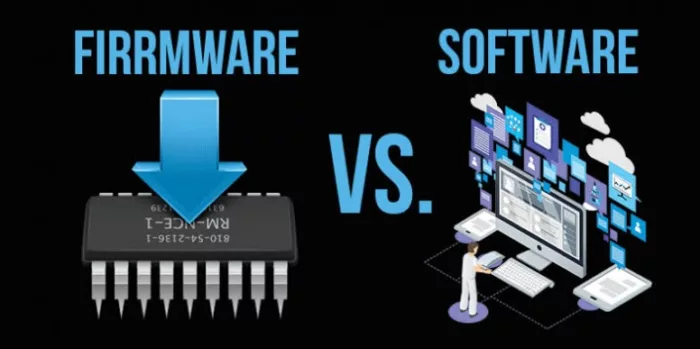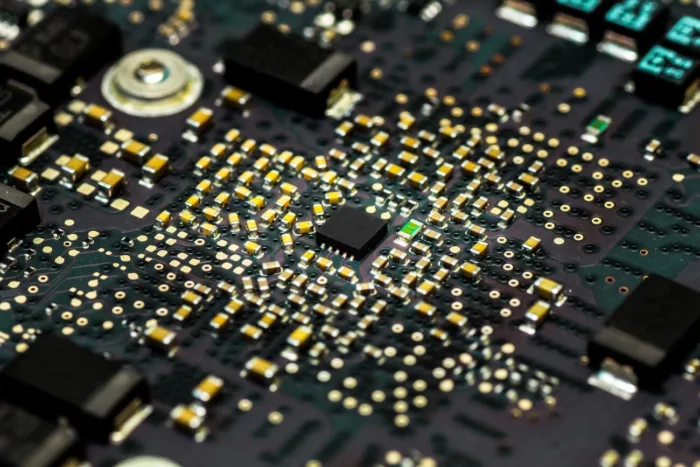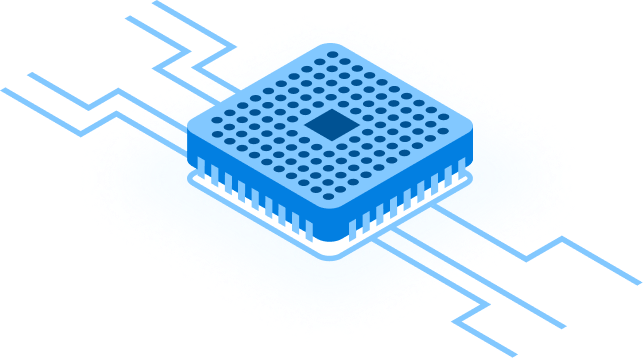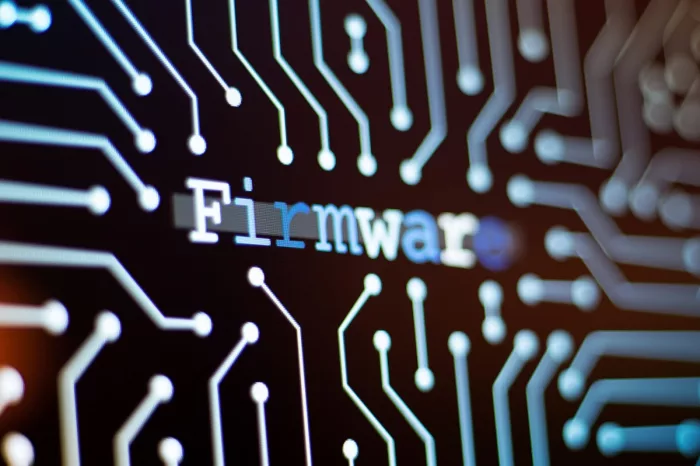Firmware is a critical component of modern electronics, yet many people are unfamiliar with what it is and how it works. In simple terms, firmware is the code that runs on devices such as smartphones, computers, and smart home devices, allowing them to perform their intended functions. It is a type of software, but it differs from traditional software in important ways.
In this comprehensive guide, we’ll explore what firmware is, how it works, and why it’s so important.
Table of Contents
What is Firmware?
Firmware is a type of software that is embedded into electronic devices and hardware components. It serves as a bridge between the hardware and the operating system, allowing the device to function as intended. Unlike traditional software, firmware is stored in non-volatile memory, which means it is retained even when the device is turned off.
It is responsible for controlling various hardware components, such as the device’s processor, memory, and input/output interfaces. It also provides low-level control over peripherals like printers, cameras, and other external devices. This low-level control is essential for ensuring that the device works correctly and efficiently.
Importance of Firmware
Firmware plays a crucial role in the operation of modern electronics and hardware components. It is responsible for controlling the low-level functions of a device, such as booting up, initializing hardware, and executing software programs.
One of the main advantages of firmware is its ability to interact directly with the hardware, which provides greater control and efficiency compared to traditional software. Firmware can optimize hardware performance, reduce power consumption, and improve system stability.
Firmware is used in a wide range of applications, from consumer electronics such as smartphones and smart home devices to industrial equipment, medical devices, and automobiles. In each of these applications, firmware is critical to the proper functioning and operation of the device.
It also plays a role in ensuring device security. By controlling the boot process and hardware initialization, firmware can prevent unauthorized access to a device and protect against malware and other security threats.
Firmware vs Software

While firmware and software are both types of computer programs, there are several key differences between them.
Firmware is a type of software that is embedded into hardware devices and components, such as microcontrollers, sensors, and other electronic devices. It is designed to provide low-level control and management of hardware components, such as the device’s processor, memory, and input/output interfaces. Firmware is stored in non-volatile memory and is retained even when the device is turned off.
In contrast, software refers to programs and applications that run on top of an operating system. Software is typically installed onto a computer or other device and runs in volatile memory, which means it is lost when the device is turned off.
One of the primary differences between firmware and software is their level of control over hardware components. Firmware provides direct, low-level control over hardware components, whereas software operates at a higher level and interacts with hardware through an operating system.
This gives firmware greater control and optimization over hardware, making it essential for tasks such as device initialization and hardware management.
Another difference between firmware and software is their update process. Firmware updates are typically more difficult and risky than software updates, as they require a specific update process that varies between devices. Additionally, firmware updates can potentially render a device inoperable if not performed correctly, whereas software updates can be easily reverted or rolled back if issues arise.
Types of Firmware

There are several types of firmware used in modern electronics and hardware components. These include:
1. Device firmware
This type of firmware is specific to a particular device, such as a printer, camera, or hard drive. It is responsible for controlling the device’s hardware components, such as the processor, memory, and input/output interfaces. Device firmware is typically optimized for the specific device it is running on and is stored in non-volatile memory.
2. Embedded firmware
This type of firmware is used in embedded systems, which are typically standalone devices that perform a specific function, such as a medical device or a smart home thermostat. Embedded firmware is highly optimized for performance and efficiency, and is typically designed to operate in a standalone mode, without the need for an operating system.
3. BIOS/UEFI firmware
This type of firmware is used to boot up a computer system and initialize its hardware components. It provides low-level control over system resources, including memory, storage, and input/output interfaces. BIOS (Basic Input/Output System) is the traditional firmware used in most computer systems, while UEFI (Unified Extensible Firmware Interface) is a newer, more advanced firmware standard.
3. Controller firmware
This type of firmware is used in various types of controllers, such as game controllers, camera controllers, and motor controllers. It provides low-level control over the controller’s hardware components and can optimize its performance and operation. Controller firmware is typically designed to be highly responsive and efficient, as controllers require a real-time operation.
4. Mobile firmware
This type of firmware is used in mobile devices, such as smartphones and tablets. It is responsible for controlling the device’s hardware components, managing power consumption, and executing software programs. Mobile firmware is highly optimized for performance and efficiency, as mobile devices have limited resources and must operate on a battery.
5. Network firmware
This type of firmware is used in networking equipment, such as routers and switches. It is responsible for managing network traffic, implementing security protocols, and optimizing network performance. Network firmware is typically designed to be highly secure and reliable, as network equipment is critical to the operation of many businesses and organizations.
Characteristics of Firmware

Firmware has several characteristics that distinguish it from other types of software:
1. Low-level control
Firmware operates at a low-level, directly controlling hardware components and providing low-level access to system resources. This allows it to optimize the performance of hardware and ensure reliable operation.
2. Non-volatile
It is typically stored in non-volatile memory, which means it is retained even when power is turned off. This allows firmware to be persistent and reliable, as it can survive power outages and other disruptions.
3. Embedded
Firmware is often embedded directly into hardware components, such as microcontrollers or system-on-chips. This makes it highly optimized for the specific hardware it is running on and ensures reliable operation.
4. Highly specific
Firmware is often highly specific to the hardware it is running on, which makes it difficult to transfer to other hardware platforms. This also means that firmware is often highly optimized for the specific hardware it is running on, providing high performance and reliability.
5. Difficult to modify
It is difficult to modify, as it is typically stored in read-only memory or other secure storage locations. This makes it more secure and less susceptible to hacking or other malicious attacks.
6. Upgradable
Although firmware is difficult to modify, it can often be upgraded or updated to fix bugs or improve performance. This can be done through a firmware update process that typically involves downloading new firmware to the device and then flashing it onto the non-volatile memory.
How does Firmware work?

Firmware is typically installed on a device’s non-volatile memory, which means that it remains in place even when the device is powered off. When the device is turned on, it is loaded into the device’s RAM and executed.
It is usually written in low-level programming languages such as assembly language or C and is optimized for the specific hardware architecture of the device. It can be updated or upgraded by the manufacturer through various means, including over-the-air updates, specialized software tools, or firmware updates on physical media such as USB drives.
The specific functions of firmware depend on the device it is installed on. For example, the firmware on a printer may be responsible for controlling the movement of the printer’s print head, managing its ink supply, and communicating with a computer or other device to receive print jobs.
Firmware Applications
Firmware has a wide range of applications in various electronic devices, including:
1. Embedded systems
It is commonly used in embedded systems, which are computer systems that are integrated into other devices, such as smartphones, home appliances, and automotive electronics.
2. Peripherals
It is also used in peripherals such as printers, scanners, and cameras to manage device functions and communicate with other devices.
3. Networking
Network devices such as routers, switches, and modems use firmware to manage network connectivity, security, and configuration.
4. Gaming
Gaming consoles and controllers rely on the firmware to manage game functions, communication with other devices, and hardware resources.
5. Medical devices
Many medical devices, such as pacemakers and insulin pumps, use firmware to control the device’s behavior, monitor vital signs, and communicate with other devices.
6. Industrial control systems
Industrial control systems, such as those used in manufacturing plants, use firmware to manage machinery, regulate temperature and humidity, and monitor system performance.
7. IoT devices
The firmware is used in Internet of Things (IoT) devices, such as smart home devices, to manage device functions, communicate with other devices, and provide security features.
Types of Firmware Updates

Major updates
These updates bring significant changes to the firmware, such as new features, bug fixes, or improvements in performance. Major updates may also require the device to be rebooted or reset to complete the installation process.
Minor updates
Such updates usually contain small bug fixes or performance improvements and do not introduce any new features. Minor updates are typically faster to install and may not require the device to be restarted.
Security updates
These updates are specifically designed to address security vulnerabilities in the firmware. Security updates are important as they protect the device from potential threats and may include patches for known security issues or vulnerabilities.
Conclusion:
firmware updates are essential for keeping electronic devices running smoothly and securely. Major updates introduce significant changes, minor updates fix bugs and improve performance, and security updates protect the device from potential threats. It is important to regularly check for and install firmware updates to ensure that devices are up-to-date and functioning optimally.
FAQs
What is firmware?
Firmware is a type of software that is embedded in hardware devices to control their behavior. It provides low-level control over the hardware and can be thought of as the "operating system" for the device.
How is firmware different from software?
Firmware is a type of software that is specifically designed to run on hardware devices, while software is generally designed to run on general-purpose computers. Firmware is often more tightly integrated with the hardware and provides low-level control over the device.
What types of devices use firmware?
Firmware is used in a wide variety of devices, including smartphones, tablets, routers, printers, cameras, and many other types of electronic devices.
How is firmware updated?
Firmware updates are typically provided by the device manufacturer and can be installed using a special software tool or through the device's user interface. Firmware updates can be important for improving the device's functionality, fixing bugs, and addressing security vulnerabilities.
What are the risks of updating firmware?
Updating firmware can be risky, as it can potentially cause the device to malfunction or become unusable if something goes wrong during the update process. It is important to carefully follow the manufacturer's instructions when updating firmware and to ensure that the device has sufficient power and resources to complete the update.
What is the lifespan of firmware?
Firmware can have a long lifespan, as it is often designed to be stable and reliable over the lifetime of the device. However, as technology advances and new security vulnerabilities are discovered, firmware updates may be necessary to keep the device secure and up-to-date.
How can I check the version of firmware on my device?
The process for checking the firmware version on your device may vary depending on the device and manufacturer. In many cases, you can find the firmware version in the device's settings or through a diagnostic tool provided by the manufacturer.
- What is Epic Games Launcher and How to Install It? - July 15, 2024
- What Is Audius Music Streaming App and How Does it Work? - July 13, 2024
- The 10 Best Astronomy Apps for Stargazing - July 12, 2024




